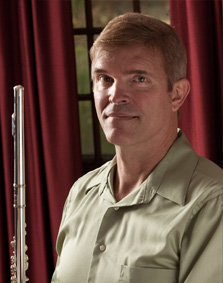The correct time to purchase a step-up flute for a young flutist can be determined by a few criteria:
How long has the student been playing and how dedicated are they to improving? If the student is motivated, practicing and is seen to be interested in playing the flute through Jr. High School and beyond, they may be ready for a new flute two or three years after beginning, sometimes sooner. If they enjoy the flute in a more casual way, perhaps as a social outlet, and practice sporadically they may not need a step-up flute till around the 8th, 9th or 10th grade.
A tangible indication that a student needs a better flute is that they will start to overpower the instrument, frequently over blowing, and cracking notes. Entry level flutes have head-joints that are made simply and quickly to reduce cost. The embouchure hole is designed to be “free blowing” and easy to play for all beginners, but can be easily “overblown” as the flutists embouchure develops. These free blowing headjoints can help a beginning flutist get the notes out easily, but produces a one dimensional hollow sound.
As a flutist develops their finger technique they will need a faster, more responsive mechanism. Their rate of improvement will stagnate and they will become more and more frustrated with the instrument and its relatively poor response to the effort they are putting in. Consult the flute teacher about when to upgrade a flute as well.
There is a very wide range in the quality of step up flute brands. A good one will have a mechanism greatly superior to the beginning flute.
The advantages of a step up flute:
The more silver, the better the sound.
The density and hardness of sterling silver ( 92.5% pure silver ) is responsible for creating the most beautiful, flexible sound for the vast majority of flutists. As a flutists ability improves, they should have an instrument that has some silver content. Some step-up instruments will include only a sterling silver lip plate and riser. (Photo here.) Some will include a head-joint made entirely from sterling silver and some will include sterling silver content on all three pieces of tubing (not the mechanism). Unfortunately, the more silver, the higher the price, but the difference in performance is clearly better.
Superior head-joint design and hand cut embouchure holes.
As a flutists embouchure develops, they need a flute with a more sophisticated hand cut, embouchure hole design. This produces a faster response, better tuning, more dynamic range and a larger palette of tone colors.
Customizing the embouchure to the right head-joint design.
Some of the better quality step-up flute brands will offer as many as four distinctly different head-joint designs. Flutists have many different ways of forming an embouchure, depending on the shape of their lips, teeth and jaws. The different embouchure hole designs allow the flutist to customize their embouchure to the right kind of head-joint and achieve much better results musically!
A handmade mechanism built with precision.
A precisely made mechanism will allow a quicker response, better tone and fewer repairs. More importantly, a handmade mechanism does not allow any looseness or “side play” in the mechanism and assures that the pad comes down on the tone-hole in exactly the same place every time, insuring a good air seal. Click here to see my article on handmade vs. machine made flutes.
A flute that plays better in tune (with a well designed “scale”).
All flute companies use their own “scale” and some are definitely better than others. The “scale” of a flute means how it plays in tune with itself and with other musicians. The scale is determined by the design of the head-joint and the size and placement of the holes in the flute tubes. The better quality step up brands have produced superior scales, which allows the flutist to stay in tune with ease.
French style keys.
Most step-up flutes are made with french style keys. These are keys in which holes have been placed in the center of the keys covered by the fingers. The purpose of these holes is twofold. To improve pitch and to increase the venting of the toneholes which gives a more open and full sound to the flute.
Optional mechanisms available.
C# Trill – Some students may be ready for the C# trill which permits better tone and pitch on open C# and makes numerous trills and tremolos much easier, especially in the upper octave. Click here to see my article on the C# trill.
Heavy Wall Tubing – A small percentage of students may see improvement in their sound by selecting flute tubing made slightly thicker, which can produce a darker, more powerful sound.
A word about how big a step-up to take:
Don’t become nickel and dimed to death by purchasing more than one step-up flute over a period of 2 to 3 years. This is the biggest mistake I see parents make.








